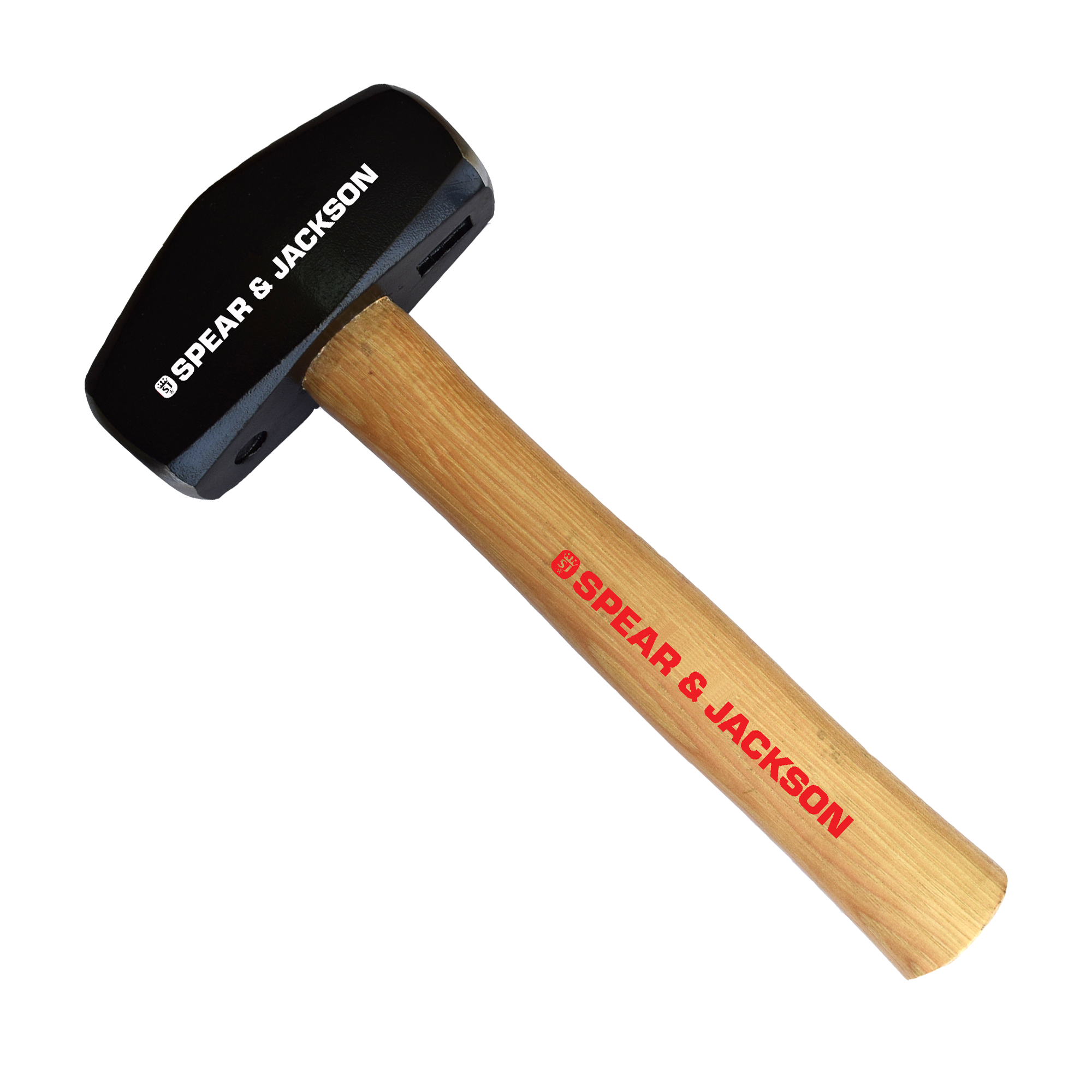Description
THIS PRODUCT: Genuine Hickory Handle, Cylindrical Wedges, Heat treated head.
IN GENERAL: A club hammer, also known as a lump hammer or a drilling hammer, is a short-handled, heavy-duty hand tool designed for striking and driving tasks in construction, masonry, and demolition work. It is characterized by its compact size, relatively short handle, and a heavy, flat striking face. Here’s a brief description of a club hammer and some common uses:
Description:
- Head: The head of a club hammer is typically made of forged steel and features a flat, square or rectangular striking face that is larger and heavier than that of a typical hammer. The striking face is often blunt and does not have a peen or claw.
- Handle: The handle of a club hammer is usually short and may be made of wood or a durable composite material. The handle design allows for a firm grip and provides leverage for striking with force.
- Weight: Club hammers come in various weights, with options typically ranging from 2 to 4 pounds (0.91 to 1.81 kilograms) or more. The weight of the head affects the force it can deliver during striking.
Common Uses:
- Demolition: Club hammers are frequently used in demolition work for breaking apart concrete, brick, and stone structures. The heavy weight of the hammer head, combined with controlled strikes, helps break down materials.
- Chiseling: Club hammers are often used with chisels and other hand tools to chisel away materials such as concrete, mortar, and stone. The weight and impact force make them effective for this purpose.
- Driving Chisels and Bolts: The flat striking face of the club hammer is used to drive chisels and bolster chisels into materials. It can also be used for driving heavy-duty bolts, anchors, and stakes into various surfaces.
- Masonry Work: Masons and bricklayers use club hammers for tapping bricks, adjusting their position, and ensuring they are properly aligned in brickwork or masonry projects.
- Stone Carving: Stonecarvers use club hammers to chip away at stone surfaces, create texture, and shape stone sculptures.
- Splitting Wood: While not its primary use, a club hammer can be used for splitting small logs or wood pieces by striking a splitting wedge driven into the wood.
- Metalworking: In metalworking, club hammers may be used for shaping and forming metal components, particularly when a heavier impact is needed.
- Pounding Stakes: Club hammers are useful for driving stakes into the ground for various purposes, such as securing tents, fences, and construction site markers.
- Tapping Surfaces: Construction workers and builders may use club hammers for tapping surfaces to check for stability or to align materials.
Club hammers are valued for their ability to deliver heavy and controlled strikes, making them effective for tasks that require forceful impact, such as demolition and chiseling. However, they are not typically used for fine or precision work, as their blunt striking face is designed for heavy-duty applications. Proper safety precautions should be taken when using a club hammer to avoid injury and ensure accuracy in various construction and heavy-duty tasks.


